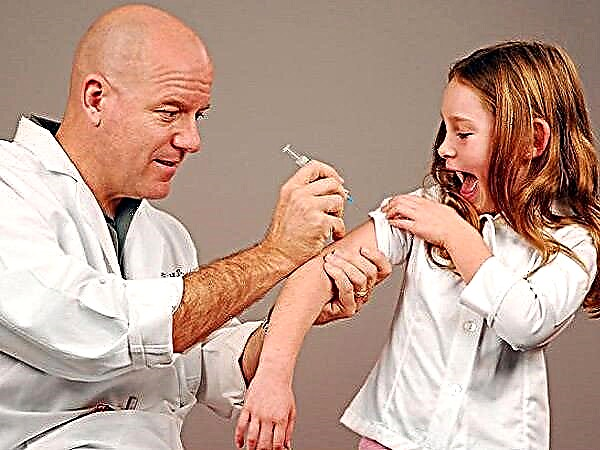
The persistence of the ovarian follicle can be the reason for the absence of the desired pregnancy, even if the couple was examined and recognized as healthy. This is not a disease, but a special condition caused by hormonal imbalance, and you should not take such a diagnosis as a sentence - modern medicine has many opportunities to help a woman find the joy of motherhood.

What it is?
Every month in the body of a woman of reproductive age, a dominant follicle matures, which is a "house" for an egg maturing inside it. During ovulation, the follicle bursts and releases the oocyte into the abdominal cavity, from where it is quickly captured by the fallopian tube. It is in it, under a favorable set of circumstances, that fertilization occurs.
A woman has a limited number of follicles. This is called the ovarian reserve. A girl is born with him. With the onset of puberty, folliculogenesis processes start, dormant until puberty. As a result, the girl begins to menstruate. When the supply of follicles is depleted, menopause begins.
Every month in a healthy woman of childbearing age, after menstruation, several follicles begin to mature on the ovaries, they are called antral, but the egg will appear from only one.
The development of the rest of the follicles is inhibited, so the body saves ovarian reserve in order to extend the fertile period of a woman's life. Rarely, more than one dominant follicle matures and then they talk about double ovulation, which increases a woman's chances of a multiple pregnancy.

The follicles do not begin to grow by themselves, but under the action of a certain active substance - the hormone FSH (follicle-stimulating hormone) produced by the anterior pituitary gland. In the first half of the female cycle, the dominant follicle actively grows, inside which the egg matures.
By the middle of the cycle, the level of luteinizing hormone (LH) rises and its action is directed to the membrane of the follicle vesicle itself. It becomes thinner, stigma forms on it, and on the day of ovulation, the membrane ruptures, due to which the germ cell is able to leave the follicular cavity. Within a day and a half, the egg remains viable and can be fertilized with a sperm.
If the follicle grows at a normal rate, but does not rupture, then they speak of persistence. This phenomenon is usually associated with a low level of production of the hormone LH, as well as with other reasons (for example, abnormal thickness of the follicular membrane). A persistent follicle continues to live for about 10 more days, but the oocyte in it overripe and dies. There is no ovulation, and in such a cycle, conception is impossible.
For a long time, persistence was unknown to doctors, and for the first time this phenomenon was described in 1915 by the German obstetrician Robert Schroeder. The corresponding disease was named after him - persistence, which has a synonym called Schroeder's disease. It was initially thought to be a long, chronic condition, but later doctors realized that persistence in most cases was a temporary ovulation disorder.
Most often, the follicle persists in adolescent girls and in women after 40 years in the premenopausal period. In menopause, Schroeder's disease does not occur, since folliculogenesis is complete.

Causes
The main reason why a mature follicle persists and does not burst is insufficient LH hormone levels. It is produced by the pituitary gland under the influence of estrogen. Disorders that lead to LH deficiency can occur in any of the links in the delicate relationship between the hypothalamus, pituitary gland and ovaries. If a woman has little estrogen, LH may also be low, but in this case, estrogen deficiency is observed, when the usual maturation of follicles does not occur initially.
If the follicle is mature, then it can be assumed that the woman's estrogen level is normal, and then the decrease in LH synthesis may be associated with certain reasons.
- Pathologies of the pituitary gland, hypothalamus - as a rule, they are associated with a disruption in the production of important release factors. Inhibition of the production of luteotropin, in particular, can cause head injuries, tumors of the pituitary gland and hypothalamus, neuroinfections suffered by a woman - meningitis, encephalitis, meningoencephalitis or a stroke, as well as radiation damage.
- Age factor and the so-called hormonal revolution - with age, a woman's production of sex hormones decreases, and therefore the amount of luteinizing hormone also decreases. LH levels can suffer during periods of tremendous endocrine changes. For example, during puberty, after childbirth or before menopause. At the biochemical level, this can be manifested by a lack of synchronicity in the production of LH and FSH. A decrease in melatonin synthesis also leads to a decrease in LH.
- Medicines taken - the synthesis of luteinizing hormone decreases if a woman takes certain hormonal drugs, cardiac glycosides, antidepressants. Shock doses of estrogens, which contain oral contraceptives, also continue to disrupt LH synthesis for some time, therefore, within 2-3 cycles after the abolition of OC, persistence of the follicle or anovulation without maturation of follicles at all is possible.
- Psychological factors - long and difficult emotional experiences, physical fatigue, lack of sleep cause increased production of stress hormones. In turn, adrenocorticotropins (stress hormones ACTH) partially suppress the production of sex hormones and reduce LH secretion. This is often the reason for infertility among successful business women, among professional athletes.
It is important to remember that any diseases of the thyroid gland, adrenal cortex can also lead to a general hormonal imbalance, the manifestation of which can be the persistence of a mature follicle.

Types of pathology
There are two types of persistence and they differ in the lifetime of the non-ovulated follicle.
- Rhythmic - short-term persistence, when a follicle that has not burst lives from 20 to 40 days. Then menstrual bleeding begins. The cycle is likely to be restored after that.
- Long Is Schroeder's disease, which most often develops in women aged 42 and older, in the premenopausal period. A delay in menstruation or occasional spotting can last for several months, new follicles do not mature, the unopened follicle continues to exist sluggishly, and the body is dominated by estrogen. Further, follicular atresia and profuse uterine bleeding may occur.
In women who are of childbearing age, rhythmic persistence is usually observed.

Symptoms and Signs
The menstrual cycle with persistence increases and ranges from 35 days. If the follicle does not rupture, the cycle can sometimes last up to 2 months. A woman cannot get pregnant, because with the persistence of the follicle in the right or left ovary, new oocytes do not mature. With prolonged persistence, discharge that vaguely resembles menstrual discharge may appear 2-3 times a year.
Usually there are no other symptoms, only a small part of women with a special, increased sensitivity to pain and increased excitability of the nervous system, complain of pulling monotonous spasms on the left or right side of the lower abdomen.
If persistence is long, then inside the follicle, which has matured and has not ruptured, the secretion and accumulation of fluid continues. This can cause the cyst to rupture. and then the woman may need surgical help.
But the main danger of persistence lies in the fact that high doses of estrogen, which are produced with it, can provoke malignant degeneration of the endometrium, the likelihood of endometriosis, uterine fibroids, and breast cancer increases.

What to do?
If a woman has a broken cycle, she complains of delayed menstruation and the inability to conceive a baby, the doctor prescribes an examination, which, among other things, is designed to identify possible persistence. For this, the following specific list of examinations is recommended.
- Folliculometry - An ultrasound of the ovaries, which, with the appropriate pathology, detects one or more mature follicles shortly before the expected date of the expected menstruation, but the corpus luteum, which indicates that ovulation has taken place, is not.
- Blood test for hormones - the concentration of estradiol throughout the entire cycle in a woman with persistence remains high, progesterone does not rise in the second half of the cycle, the FSH hormone is constantly increased, and LH is reduced.
- Gynecological ultrasound - with persistence in a woman, an abnormal thickening of the endometrium is noted, due to which the uterus slightly increases. The ovaries may show signs of polycystic disease.
- Endometrial biopsy - a sample for her is taken during hysteroscopy or diagnostic curettage of the uterine cavity.
Sometimes it becomes necessary to conduct a colposcopy, as well as visit an endocrinologist and neurosurgeon.
Treatment
Persistence is usually treated hormonal agents. Therapy is aimed at so that the female cycle is fully restored. Sometimes it helps the appointment of oral contraceptives. They restore hormonal balance in the absence of ovulation in a woman. After the pills are canceled, the cycle recovers fairly quickly.
Also used drugs-gestagens, estrogen-gestagens, progestins. According to reviews, the use of the hCG drug gives a good effect - after such an injection before the expected ovulation, when the follicle reaches a large size, the membrane rupture usually occurs without problems. In the second phase of the cycle, progesterone preparations are then prescribed, for example, "Utrozhestan" or "Duphaston".
Sometimes, strictly under laboratory control of the ratio of all hormones involved in ovulation, synthetic analogs of the LH hormone can be used.


During treatment, a woman is recommended to take iron preparations, to maintain hemoglobin levels and prevent anemia, especially if her persistence is associated with prolonged menstrual flow. Recommended for a woman diet high in protein, vitamins and physiotherapy.
The forecasts are favorable, in most cases it is possible to restore the menstrual cycle completely, as a result of which the woman's ability to conceive is restored. When pregnancy occurs after the persistence of the follicle, the very fact that the woman suffered from such a violation of the cycle, does not affect in any way the bearing of the fetus and the development of the crumbs.




